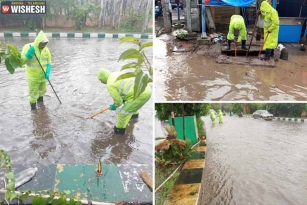
Australia's Tropical Northeast coast experienced a powerful cyclone that lashed islands, damaged roofs and cut power, officials said.
According to Australian Bureau of Meteorology, Debbie, a category 4 cyclone, brought winds gusting to kilometers per hour (155 miles per hour) and torrential rain.
Subsequently, a landfall occurred between Bowen and Airlie Beach, about 1,000 kilometers north of Brisbane, Queensland’s capital.
The nearby Whitsunday and Hayman islands, suffered winds gusting to 263 kilometers per hour.
The eye of the storm was expected to be 50 kilometers wide, according to reports.
The State’s Deputy Police Commissioner, Steve Gollschewski, told Australian Broadcasting Corp. Television, that, “they are getting reports already of roofs starting to lift, including at some of their own facilities in the Whitsundays.”
Steve further warned people in Debbie’s path, and suggested them to take shelter somewhere for the entire day on Tuesday. He even said the people can expect significant flooding in inland areas.
According to reports, around 25,000 people living in low-lying areas, have been urged to seek higher ground, and that the streets of Bowen were deserted.
Whitsundays Regional Council Mayor, Andrew Willcox said, “the authorities had received 98 requests for help and had responded to most of them.”
“About 10,000 premises had lost electricity,” Willcox said.
Police commissioner Ian Stewart said, communities along more than 300 kilometers of coastline would be affected from Ayr to south of Mackay.
Thousands of people started evacuating areas in Debbie’s path on yesterday. This would be the biggest evacuation seen in Australia, since 1974, when Cyclone Tracy devastated the northern city of Darwin.
Reports say, the category 4 storm could escalate to a Category 5 even.
Weather Underground in Ann Arbor, Michigan, Co-Founder, Jeff Masters, said, “The cyclone will quickly unravel.”
“In 24 hours it could be a tropical depression,” added Jeff.
Officials warned residents yesterday, to leave the area before it was too late, as dangerous storm tides, powerful winds and heavy rain were expected to blow the region.
The regional director of Queensland’s bureau of meteorology, Bruce Gunn, said, the State had earlier experienced cyclone Yasi, a severe tropical storm, hit in 2011.
This storm, was one of the most powerful cyclones to have affected Queensland, causing billions of dollars in damage.
Prime Minister Malcolm Turnbull said, that, “Australia’s military is moving into position to help authorities respond to the cyclone.”
By Supraja

























